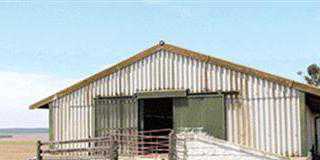We’ve all seen the newspaper advertisements and knock-and-drop flyers.
“Buy this heat pump, inverter drive and a solar panel, and you can immediately realise massive savings on your power bill’, or words to that effect. The sales pitch will include outrageous claims of 60% savings, accompanied by a clever-looking calculation.
You are then told that your lights are inefficient and are advised to replace them with LEDs. Doing so will save you at least 30% per month, you read.
You then duly discover that those LEDs are not sufficient and you have to add more. Now, when you do the calculations, you are back where you started!
There are two things wrong here. Firstly, the salesman was only looking to make a quick buck and the solution he sold you did not suit your problem. Secondly, and nothing was metered! Most of us rely on the council bill to gauge how much we’ve saved. But the bill is often only an estimation and provides no insight into energy usage.
Measuring usage
Smart metering should be the starting point of any energy efficiency project. This provides you with half-hourly energy consumption data accessible from your computer or smartphone, allowing you to keep track of your energy spending. By utilising this data, you take control of your council bill and can plan ahead for those times when the council realises it has been underestimating your usage. You can also keep track of your bill to date, and forecast what your next bill will look like.
Time-of-use metering
In many instances, the energy user can choose between a demand-scale tariff – a flat rate – or a time-of-use tariff (TOU), where cost varies according to season and time of day.
Reorganising your operation according to TOU tariffs can realise significant cost savings. Depending on your local council rates, energy during peak hours can cost up to four times as much as energy during off-peak hours. In the farming sector, we have seen savings of between 5% and 15% with a simple rates optimisation structure.
Waste management
Smart metering is also a highly effective tool to reduce waste. How often do we walk into our workshop only to find the lights burning and the welding machine still on?
The baseload of a farm refers to the energy demand outside of working hours. Depending on tariff structure, the baseload can cost up to R10 000/ kW/ year. Clearly, switching appliances off at night is a sure way to save. Unfortunately, none of us can go around every evening checking that everything is off. By using a smart meter, however, usage can be monitored.
Demand management
Demand charges are often calculated according to the ratchet principle: the consumer is charged for the maximum demand over a three-or six-month period. Charges can be anything from between R100kVA and R200kVA (kilovolt amp), depending on your local tariffs.
We are creatures of habit, and we start each day switching everything on at once. During this short time, our operations are subjected to a high energy demand. However, if we stagger this over, say, two hours, we can reduce demand and related charges significantly.
Nicol du Toit is a mechanical engineer and energy manager based in Johannesburg.












